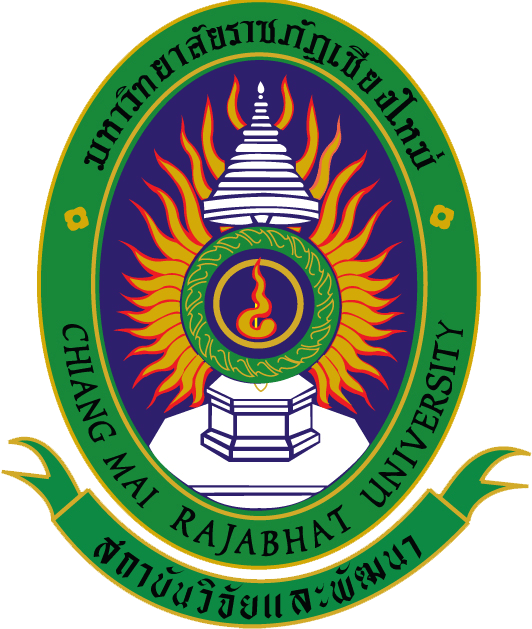
ระบบสารสนเทศงานวิจัย สถาบันวิจัยและพัฒนา มหาวิทยาลัยราชภัฏเชียงใหม่
Research Information System(RIS)
การจัดการความรู้ภาคเกษตรของชุมชนจังหวัดเชียงใหม่ จากภูมิปัญญาท้องถิ่น สู่ประชาคมอาเซียน ปีที่ 3
อาจารย์วิไลพร ไชยโย
คณะวิทยาการจัดการ
คำสำคัญ :
เลขทะเบียน :
1083-62-MGT-NRCT
บทคัดย่อ
การวิจัยมีวัตถุประสงค์เพื ่อวิจัยและพัฒนาศักยภาพภาคการเกษตรของชุมชน จังหวัด เชียงใหม่ ในประเด็นการจัดการความรู ้ภาคเกษตรของชุมชนจังหวัดเชียงใหม่ จากภูมิปัญญา ท้องถิ ่นสู ่ประชาคมอาเซียน อย่างสร้างสรรค์ เพื ่อการแข่งขันในประชาคมเศรษฐกิจอาเซียน บนพื ้นฐานปรัชญาของเศรษฐกิจพอเพียง ในประเด็นการจัดการความรู้ภาคเกษตรของชุมชน จังหวัดเชียงใหม่ โดยเป็นการวิจัยเชิงคุณภาพและสนับสนุนด้วยการวิเคราะห์เชิงปริมาณจากข้อมูล ปฐมภูมิของกลุ่มเกษตรกรที่เข้าร่วมโครงการด้วยความสมัครใจผ่านองค์กรปกครองส่วนท้องถิ่น จ านวน 9 ต าบล 17 กลุ่มเกษตรกร ที่มีศักยภาพในการพัฒนาสินค้าเกษตรชุมชน เมื่อเปรียบเทียบใน ระดับประชาคมอาเซียน อาศัยวิธีการวิจัยแบบมีส่วนร่วม (PAR) วิเคราะห์ศักยภาพด้วย กรอบทฤษฎี การเชื่อมโยงกับกรอบแนวคิดแบบ Prescriptive ซึ่งอธิบายถึงการพัฒนาการของความรู้ในองค์กร หรือที่เรียกว่า “วงจรความรู้ (Knowledge cycle)” ซึ่งแต่ละกรอบความคิดจะมีความแตกต่างกัน ในองค์ประกอบของวงจรความรู้ล าดับขององค์ความรู้ประกอบของวงจร และขั้นตอนต่างๆ ที่เป็น องค์ประกอบย่อย ได้แบ่งองค์ประกอบ เป็น 3 กลุ่ม เรียกว่า เสาหลักของการจัดการความรู้(Pillar of knowledge management) โดยแต่ละเสาจะประกอบไปด้วยกิจกรรมต่าง ๆ เพื่อท าให้วงจรความรู้ ครบถ้วน ซึ่งประกอบไปด้วย การสร้าง(create) การน าเสนอ(manifest) การใช้(use) การถ่ายถอด (transfer) ผลการวิจัยพบว่า ด้านการวิเคราะห์ปัจจัยสภาพแวดล้อมภายในหน่วยงานเรียง ตามล าดับน้ าหนักความส าคัญของความรู้ ด้านการแบกรับความเสี่ยงด้านการผลิต เกษตรกรมีความรู้ ด้านการแบกรับความเสี่ยงในระดับปานกลาง โดยเรื่องที่มีความส าคัญด้านการแบกรับความเสี่ยงมาก ที่สุดคือ การผลิตสินค้าเกษตรโดยใช้การตลาดน าการผลิต ด้านการมีส่วนร่วมในการตัดสินใจทางธุรกิจ ของกลุ่มเกษตร เกษตรกรมีความรู้การมีส่วนร่วมในการตัดสินใจทางธุรกิจของกลุ่มเกษตรในระดับมาก โดยเรื่องที่มีความส าคัญมากที่สุดคือ การมีสมาชิกกลุ่ม ที่ร่วมกันคิด ร่วมกันท า ร่วมกันตัดสินใจ ด้าน การเป็นเจ้าของปัจจัยการผลิตของเกษตรกรที่เข้าใจโครงการ เกษตรกรมีความรู้การเป็นเจ้าของ ค ปัจจัยการผลิตของเกษตรกรที่เข้าใจโครงการในระดับปานกลาง โดยเรื่องที่มีความส าคัญมากที่สุดคือ เรื่องสามารถใช้แรงงานตนเองในการท าการเกษตรได้เต็มที่ ด้านการแบ่งปันผลประโยชน์และภาระ ต้นทุน เกษตรกรมีความรู้ด้านการแบ่งปันผลประโยชน์และภาระต้นทุนในระดับปานกลาง โดยเรื่องที่มี ความส าคัญมากที่สุดคือ การมีเครือข่าย/หน่วยงานภาครัฐเข้ามาช่วยด้านความรู้และทุนเริ่มต้นในการ ท าเกษตรและมีการบริหารงานตามโครงสร้างกลุ่มและจัดสรร ผลประโยชน์คืนกลุ่ม คณะกรรมการ และ ชุมชน ความส าคัญขององค์ความรู้ ภูมิปัญญา และนวัตกรรม ความส าคัญขององค์ความรู้ ภูมิปัญญา และนวัตกรรมในระดับมาก โดยเรื่องที่มีความส าคัญมากที่สุดคือ การมีสูตรหรือเทคนิคในการผลิต สินค้าเกษตรให้ได้ผลผลิตสูงและมีคุณภาพ การพัฒนาศักยภาพบุคลากรภาคการเกษตรของชุมชน กลุ่มเกษตรกรที่มีการพัฒนา ศักยภาพบุคลากรภาคการเกษตรของชุมชนจังหวัดเชียงใหม่ที่สามารถต่อยอดได้ทั้งหมด 6 กลุ่ม มี การเพิ่มประสิทธิภาพของกลุ่มเกษตรกร 3 ด้าน คือ ด้านผลผลิต รายได้ และพื้นที่การผลิต ด้าน รายได้มีการเพิ่มประสิทธิภาพได้มากที่สุด เนื่องจากมีการเพิ่มมูลค่าของการแปรรูปเข้ามาด้วย และ กลุ่มเกษตรกรสามารถน าองค์ความรู้ไปถ่ายทอดแก่ผู้ที่สนใจในการท าเกษตรที่คล้ายกับกลุ่มต่อไปได้ เนื่องจากขณะนี้หลายกลุ่มได้พยายามปรับเป็นศูนย์การเรียนรู้แล้ว ด้านการวิเคราะห์ศักยภาพและ ความพร้อมของกลุ่มสินค้าเกษตรชุมชน จังหวัดเชียงใหม่ โดยส่วนใหญ่ผลิตภัณฑ์ของกลุ่มเกษตรกร ได้รับการรองรับมาตรฐานผลิตภัณฑ์ระดับ GMP/ GAP เป็นผลิตภัณฑ์ที่มีศักยภาพในการผลิตสูง สามารถผลิตซ้ าในปริมาณและคุณภาพคงเดิม ผลิตภัณฑ์ที่มีศักยภาพการผลิตปานกลาง สามารถ ผลิตซ้ าในปริมาณและคุณภาพใกล้เคียงเดิม มีการใช้เทคโนโลยีที่เหมาะสม และกระบวนการผลิตไม่ ซับซ้อน เป็นผลิตภัณฑ์ที่มีการออกแบบ และพัฒนาผลิตภัณฑ์/ และบรรจุภัณฑ์อย่างต่อเนื่อง ผลิตภัณฑ์มีความหลากหลาย และมีรูปแบบเป็นที่นิยมของตลาด จากการประเมินผลิตภัณฑ์ที่ได้รับ เกณฑ์มาตรฐานผลิตภัณฑ์สินค้าเกษตรส่วนมาก ทั้ง 5 ด้าน พบว่า ผลิตภัณฑ์เข้าตามเกณฑ์สินค้า ระดับ Premium เป็นส่วนใหญ่
Abstract
The objective of this research is to research and develop agricultural capability for Chiang Mai community focusing on the issue of knowledge management in agriculture going from local wisdom to ASEAN community in order to effectively participate in the ASEAN Economic Competition based on Sufficiency Economy. It is a qualitative research supported by quantitative analysis using primary data received from volunteering farmers from 9 sub-districts totalling to 17 farmer groups that exhibited potentiality in developing to the level of ASEAN community through Participatory research method (PAR) to analyze the potentiality through Connectionism theory and Prescriptive Conceptual framework which elaborated on the topic of “Knowledge cycle”. Each framework, different in component and sequence, were divided into 3 groups also known as Pillar of Knowledge Management. Each pillar is comprised of various activities such as create, manifest, use and transfer which were needed to complete the knowledge cycle. The results were as follows: the analysis of internal factors according to the order of importance in terms of knowledge, farmers have moderate level of knowledge of production risk tolerance with the highest concern on demand driven agricultural production; farmers have a high level of knowledge in the decision making process within the agricultural group placing emphasis on group members sharing ideas, responsibilities and decisions; farmers have moderate level of knowledge concerning ownership of production means, placing emphasis on using their own manual labor จ to full capacity in the agriculture production; farmers have moderate level of knowledge on profit sharing and cost, placing emphasis on networking and receiving help from government agencies in the areas of providing knowledge and financial aid followed by efficient management based on the group’s organization and allocate benefits back to the group, committee and community; farmers have a high level of knowledge, wisdom and innovation, placing emphasis on strategies or agricultural techniques in production that will give high output and good quality agricultural products. On the issue of developing the potentiality for community agricultural personnel, it was found that in Chiang Mai community, there were a total of 6 groups of farmers who have the potential for future development. An increase of efficiency in 3 areas for the farmers were production, revenue, and production location. The area of revenue was most successful in increasing efficiency due to the added value from product processing. In addition, the farmers’ groups can transfer their knowledge to those with agricultural interests similar to the group since many groups have already adapted by turning into a learning center. As for the analysis of potential and readiness of community agricultural products in Chiang Mai province, most products from farmers’ groups have already met the standards of GMP / GAP level. The farmers’ products have high production potential with the capability to reproduce in mass with the same quantity and quality as the original order. Products with moderate production potential can be reproduced with similar quantity and quality with the use of appropriate technology and the production process is not too complicated. The products are designed with continuous development in the products as well as packaging, product diversity and market popularity. From the evaluation of products received, most of the products met the 5 agricultural criteria to reach premium status.
ไฟล์งานวิจัย
11.การจัดการความรู็ภาคเกษตรของชุมชนจังหวัดเชียงใหม่ จากภูมิปัญญาท้องถิ่น สู่ประชาคมอาเซียนปีที่3.pdf
104 14 ม.ค. 2562
สำนักงานคณะกรรมการวิจัยแห่งชาติ (วช.)
196 Paholyotin Rd., Chatuchak, Bangkok 10900
0-2561-2445